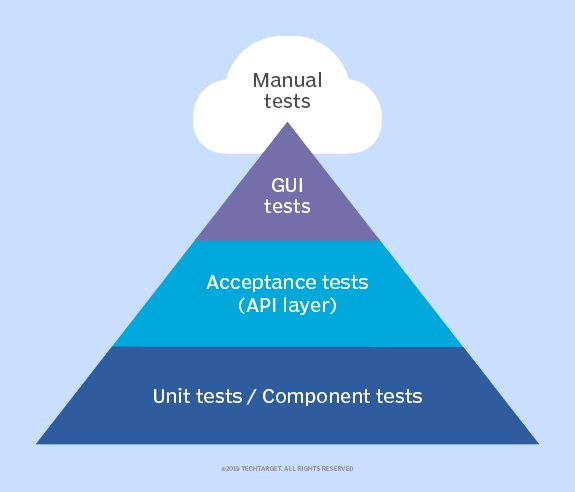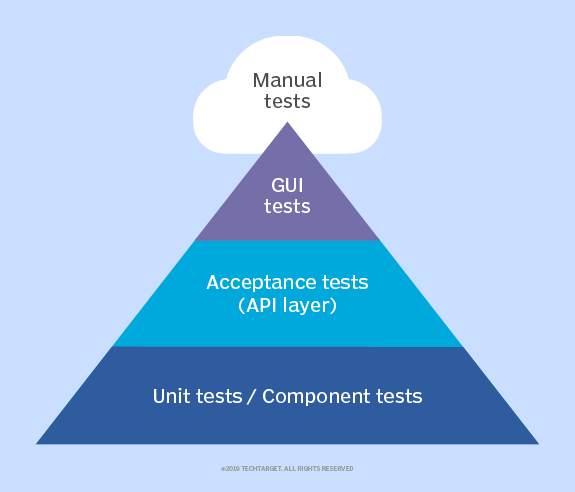Using the Test Automation Pyramid Framework for Agile Teams

Summary: This article discusses the concept of the test automation pyramid, which is a framework that outlines the types and frequency of automated tests in the software development lifecycle, explaining its benefits and how to apply it to improve the efficiency and quality of software testing in agile development teams.
Software testing is a delicate balancing act in which developers need to showcase their ability to meet customer, security, performance, and usability requirements.
As most in the industry know, weaving together all the elements of a successful software design isn’t always a linear, smooth process. Instead, it can involve multiple rounds of testing and reworks, made more complicated by the fact that changes to one function, component, or line of code can have significant trickle-down effects.
For teams looking to add more structure to this otherwise iterative testing process, one approach can give developers the information they need much earlier in the testing lifecycle. To accelerate the move from initial design to final product, teams should implement the test automation pyramid.
So what is the test automation pyramid, and how can it benefit your team?
What is the test automation pyramid?
The test automation pyramid is a visual representation of the types of automated tests that should be conducted during the software development lifecycle and the frequency at which they should appear in a testing suite to deliver quality software.
The concept of the test automation pyramid was first developed by Mike Cohn in his book, Succeeding with Agile: Software Development Using Scrum. The basic idea of the pyramid is that testers should spend more time on foundational tests before moving to more advanced ones.
The testing pyramid has three distinct sections:
- Unit and component tests are at the lowest level. This means there should be more of these tests—which involve testing small units of code—than any other type.
- Application programming interface (API) or integration acceptance tests comprise the middle tier.
- End-to-end and graphical user interface (GUI) testing are at the pyramid’s peak. These are high-level tests, so they should be run much less often.
To take the test automation pyramid from theory to practice, your team can create and utilize test scripts that align with the focus and frequency of each layer of the model until the software meets the acceptance criteria. After that, your team can move to more intensive manual testing.
What are the benefits of the test automation pyramid?
Utilizing the test automation pyramid can introduce many benefits to agile development teams. This approach:
- Provides feedback about components that need to be reworked faster and more frequently.
- Gives teams the ability to make changes much earlier, preventing time-consuming reworks later in the development process.
- Facilitates the structuring and sequencing of automated tests so results can be compared or confirmed more quickly.
How can you apply the test automation pyramid to your software development lifecycle?
Implementing the test automation pyramid is more about shifting the frequency and order of software tests rather than altering the mechanics of the quality assurance (QA) process. In other words, implementing the test automation pyramid can be relatively smooth for most agile teams, especially with the right test management tool.
To kick-start their adoption of the test automation pyramid, teams can:
- Write test scripts with varying levels of granularity based on the phase of software development and the testing goals.
- Establish the necessary milestones and outcome expectations for continuous testing so feedback can be quickly integrated into the development process.
- Utilize a test management tool that simplifies the collection, storage, and sequencing of test scripts and test runs.
Take your testing to the next level.
With customers’ expectations for the usability and functionality of their software constantly evolving, developers need to ensure that they have the necessary tools and methodologies to deliver impactful designs faster and more efficiently.
Fortunately, no matter the scale or scope of your development workload, TestMonitor is specifically designed to deliver the flexibility, features, and usability developers need to maintain their competitive edge.
Want to learn more about how TestMonitor can deliver for software development teams like yours? Then we recommend taking a look at our latest comprehensive resource, The Ultimate Guide to Effective Test Management.

